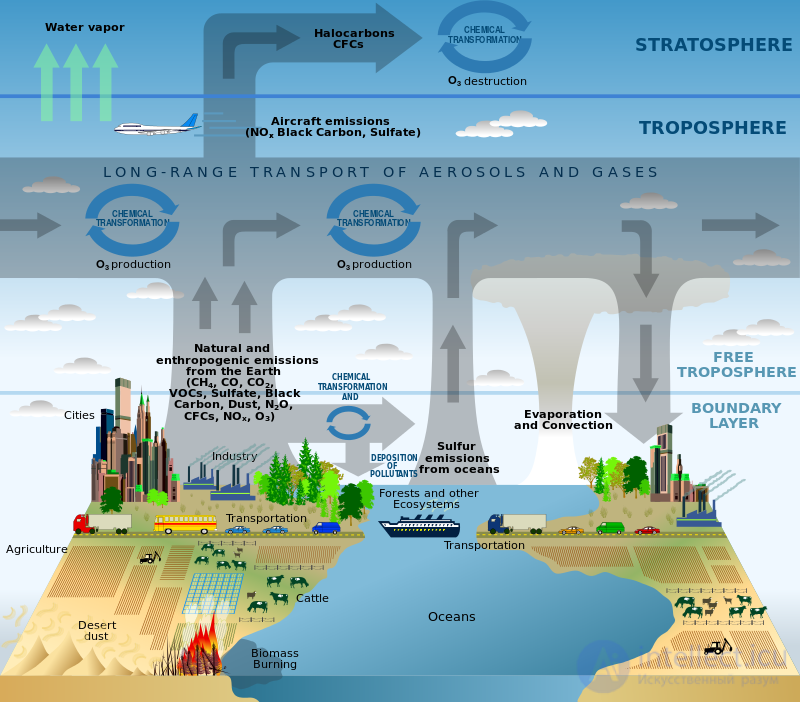Lecture
Modeling - the study of objects of knowledge on their models; building and studying models of real-life objects, processes or phenomena in order to obtain explanations of these phenomena, as well as to predict phenomena that interest the researcher.


An example of the result of scientific modeling. Diagram of chemical processes and transport processes in the atmosphere.
Due to the ambiguity of the concept of “model” in science and technology, there is no single classification of types of modeling: classification can be made according to the nature of the models, the nature of the simulated objects, the areas of application of modeling (in engineering, physical sciences, cybernetics, etc.)
At present, according to the technology of modeling and the field of application, the following types of modeling are distinguished:
and etc.
The modeling process includes three elements:
The first stage of building a model implies some knowledge of the original object. The cognitive capabilities of the model are due to the fact that the model displays (reproduces, simulates) any essential features of the original object. The question of the necessary and sufficient measure of similarity between the original and the model requires a specific analysis. Obviously, the model loses its meaning both in the case of identity with the original (then it ceases to be a model), and in the case of excessive in all significant respects differences from the original. Thus, the study of one side of the simulated object is carried out at the price of abandoning the study of other parties. Therefore, any model replaces the original only in a strictly limited sense. From this it follows that for a single object several “specialized” models can be constructed, concentrating attention on certain sides of the object under study or characterizing an object with a different degree of detail.
At the second stage, the model acts as an independent object of study. One of the forms of such a study is to conduct "model" experiments in which the conditions for the functioning of the model consciously change and the data on its "behavior" are systematized. The end result of this stage is a lot (set) of knowledge about the model.
At the third stage, the transfer of knowledge from the model to the original is carried out - the formation of a multitude of knowledge. At the same time, there is a transition from the “language” of the model to the “language” of the original. The process of knowledge transfer is carried out according to certain rules. Knowledge of the model should be adjusted to reflect those properties of the original object that were not reflected or were changed when the model was built.
The fourth stage is the practical verification of knowledge obtained through the use of models and their use for constructing a generalizing theory of an object, its transformation or control.
Modeling is a cyclical process. This means that the first four-stage cycle can be followed by a second, third, etc. At the same time, knowledge about the object under study is expanded and refined, and the initial model is gradually being improved. The shortcomings found after the first simulation cycle, due to a small knowledge of the object or errors in the construction of the model, can be corrected in subsequent cycles.
Now it is difficult to indicate the area of human activity where modeling would not be applied. For example, models have been developed for the production of automobiles, the cultivation of wheat, the functioning of individual human organs, the functioning of the Sea of Azov, the consequences of atomic war. In the future, for each system, their own models can be created; before the implementation of each technical or organizational project, modeling should be carried out.
Recently, mathematical modeling of historical dynamics (cliodynamics) has been developing intensively. To date, the development of mathematical models of “century-old” socio-demographic cycles [1] [2] [3] [4] and quite successful mathematical modeling of the Mir-System long-term development can be considered the main achievements of cliodynamics.
Comments
To leave a comment
System modeling
Terms: System modeling